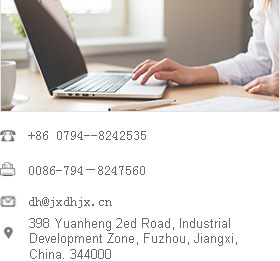
- DHP419 Series of PP Yarn Stretching Machine
- DH419D Series PP FDY Multifilament Spinning Machine HT
- DHP418 Series PP FDY Multifilament Spinning Machine MT
- DHKV 1235-12 Polyester POY Spinning Line
- DHPE Ultra High Molecular Weight Polyethylene Yarn Spinning Equipment
- DHTA Aramid 1414 Yarn Spinning Line


Polyester was invented in 1941 by J.R Winfield and J.T Dilson in the United Kingdom. Polyester macromolecules not only have rigid benzene rings, but also have aliphatic chain links, so they can be melt-processed, and their macromolecules have sufficient rigidity to give the fiber a high initial modulus. Therefore, in 1947, the British Chemical Industry Company (ICI) conducted industrialization experiments; in 1951, the United States Du Pont (Du Pont) built a polyester production plant with an annual output of 16,000 tons. First, industrialized polyester production was carried out; then , Germany’s Hearst, Enka and Glasdorf, France’s Lompoulan, Italy’s Mondidi, Japan’s Toray and Teijin all introduced British technology, and in the late 1950s Put into production. In the first few years, the production of short fibers developed rapidly, and from 1960 to 1985, the development of filaments was rapid. The output increased by an average of 314% per year, while the short fiber was only 178%. With the development of the chemical industry and the rapid development of synthetic fibers, the production of polyester has been maintained since 1972, after it became the world's first synthetic fiber. In 2007, the global output of polyester fiber was 30.7 million tons, of which polyester filament was 18.3 million tons.
The industrial production of polyester fiber in my country has developed relatively late. In 1965, the output of polyester fiber was only 1∞ tons, accounting for 1.92% of the total output of synthetic fiber in the country. Starting in the 1970s, large-scale introduction of polyester fiber production equipment and technology, and large-scale production in a short time. Between 1996 and 2003, my country's polyester filament production grew faster than short fibers, with an average annual increase of 820,000 tons, accounting for more than half of the world's average annual increase, becoming the main country driving the growth of polyester fiber in the world. In 2007, my country's polyester filament production was 12.2 million tons, and China's total polyester production accounted for 62.5% of the world's total, making China the world's largest producer of polyester filaments. my country's polyester filament yarn not only develops rapidly, but also pays attention to the development of new products. In 2007, the fiber differentiation rate reached 48.5%. my country's large-scale polyester complete plant with an annual output of 150,000 to 200,000 tons has reached the international advanced level of similar products. The unit investment of 10,000 tons has dropped from 8: 5 million during the "Eighth Five-Year Plan" and "Ninth Five-Year Plan" period to 13 million yuan. A drop of 85%. During the "Tenth Five-Year Plan" period, 75% of the newly built 15.62 million tons of polyester production capacity used my country's independent research and development technology. Although the other 25% was built by foreign countries, 60% to 70% of them still use domestic technology and equipment. my country's independent research and development of polyester filament and staple fiber production technology has reduced unit investment by 92% compared with the "Ninth Five-Year Plan". Since entering the 21st century, the advanced production capacity represented by the "large capacity, high starting point, low investment" domestic polyester project and the "multi-head, high efficiency, low consumption, precision, and flexibility" spinning technology has been rapidly developed. By the end of 2007, it had accounted for 83.5% of the production capacity of the Nie device.
Throughout the development process of my country’s polyester filament production technology, although the industry started relatively late, after more than 40 years of development, it has become the world’s largest producer of polyester filaments. Great progress has been made in localization, investment per 10,000 tons, and independent research and development capabilities. At the same time, we have also seen that there are still some problems in my country's polyester filament technology status compared with foreign developed countries. Understanding and solving these problems will be the key to our country's polyester industry to break through the bottleneck and make new progress. These problems mainly include the following aspects:
(1) The modern intensive mass production system has not yet formed. Decentralized construction of factories and small-scale production are still the main industrial forms. The average scale of polyester filament production in my country is less than 10 thousand tons per year, the average scale in South Korea is 114,000 tons per year, the average scale in Taiwan is 122,000 tons per year, and the average scale in the world is 48,800 tons per year. .
(2) The labor productivity is low and the cost is high. my country's chip spinning accounts for a relatively high proportion, has a long process flow, low production efficiency and high cost. However, many large-scale enterprises in developed countries abroad have expanded the continuous polycondensation direct spinning technology from short fiber production to polyester filament and industrial yarns, which greatly increased labor productivity, greatly reduced production costs, and achieved a per capita production capacity. 50~70 tons/year; my country is still at the level of 8~15 tons/year.







